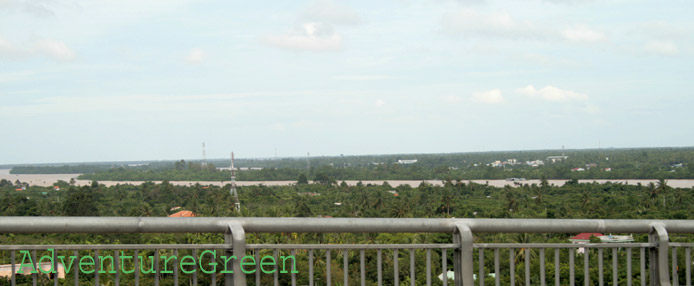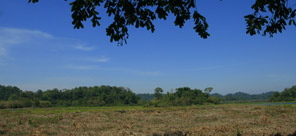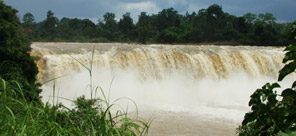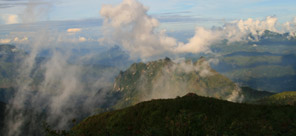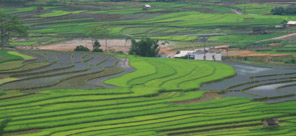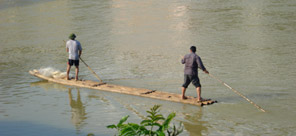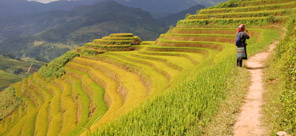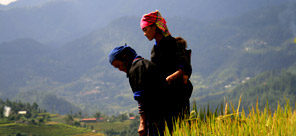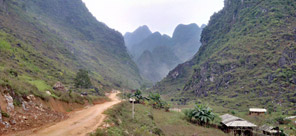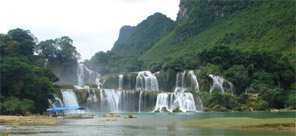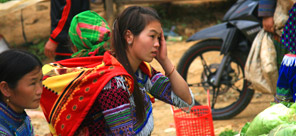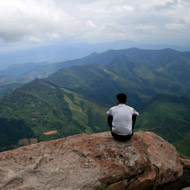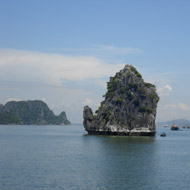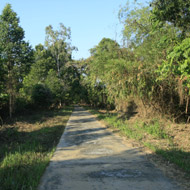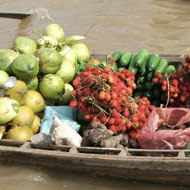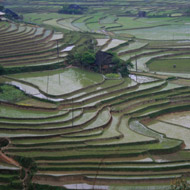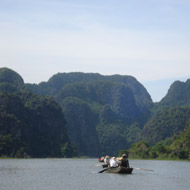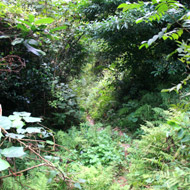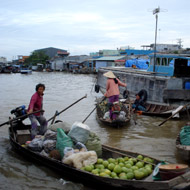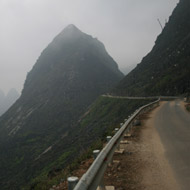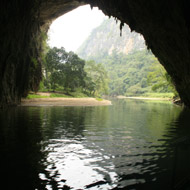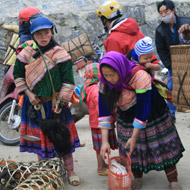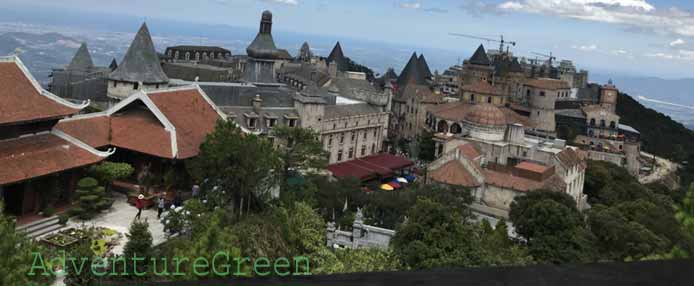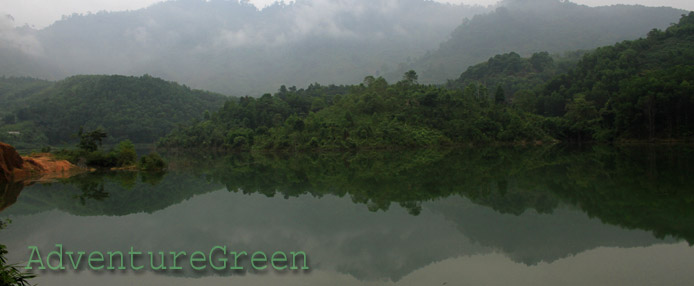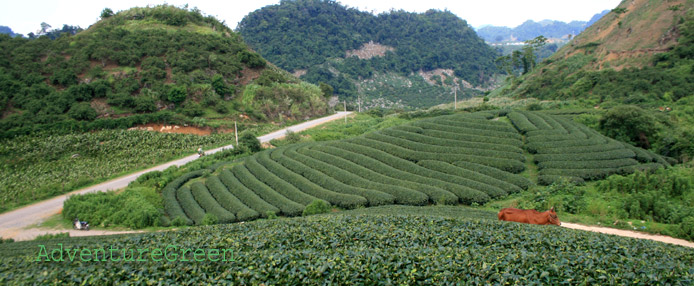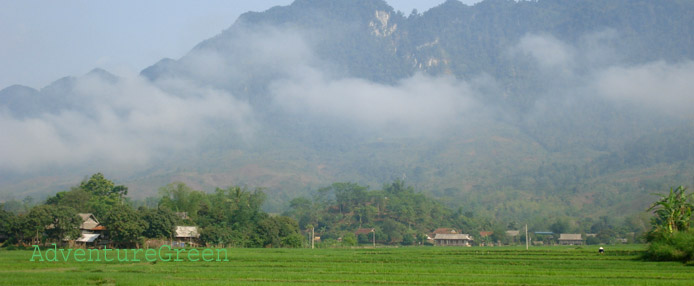September is autumn in the North, the end of the hot and dry summer in the Central Coast of Vietnam and beginning of the rainy season here, and the high rainy season in the Central Highlands and South of Vietnam. The temperatures are getting to be much nicer in the North and the Central Coast; while they are is mostly pleasant in all the other regions in Vietnam.
Winds in Vietnam in September
The winds which affect Vietnam in September include:
- The Southeasterly Wind in the North of Vietnam which causes short-lived rain and nice temperatures. The North often experiences pleasant breezes during the month.
- The Westerly/Southwesterly Wind in the Central Coast of Vietnam, which is often known as the foehn wind that causes heat strikes in this region, is to have different impact on the region in September.
In September due to position of the Intertropical Convergence Zone in September that more rain is deposited in Northern Vietnam and cool air masses form and move southward the Southwesterly Wind becomes Southerly (blowing northward), the Southwesterly Wind, if present, turns to be Southerly Wind (blowing northward) or the prevalent wind in the Central Coast of Vietnam is Northeasterly or Northerly (blowing southward). For this reason combined with the high mountains to the west of the region that the rainy season begins.
- Southwesterly Wind in the Central Highlands and the South of Vietnam which is moist and pleasant and which causes daily rain and nice temperatures. The wind is often strong this month and heavier rain is found in these two regions in September.
- It may be rare but it may happen that there are spells of weak Northeasterly Wind hitting Vietnam. This is the winter monsoon which brings dry and cool air in the North and even more rain in the Central Coast.
There may be typhoons in the North and the Central Coast of Vietnam which may cause floods in the affected regions. The Southwesterly Monsoon may be strong which makes the sea rough from Binh Thuan to Ca Mau, Ca Mau to Kien Giang (including the Rach Gia Gulf).
In September typhoons may hit northern Vietnam or the Central Coast of Vietnam from the sea which may cause cruises on Halong Bay halted for a couple of days each time, and torrential rains and flash floods in the far-northern mountains. If a typhoon makes landfall in the Central Coast, then there may be several places in this region flooded and there may be serious landslides in the mountains to the west of the Central Coast.
Possible Weather Dangers in Vietnam in September
Landslides, rock slides may take place anywhere which have continual rain for a few days and which have vertical or steep rock cliffs or high slopes. Flash floods may happen in day time or night time when torrential rain is deposited in an area with gradient terrain or mountainous terrain without enough forest or trees covered in a short period of time. Be extra cautious and be vigilant if you have to travel in these regions.
1/ Northern Vietnam
- Landslides, flash floods may take place in Cao Bang, Ha Giang, Yen Bai, Mu Cang Chai, Lao Cai, Sapa, Lai Chau, Dien Bien, Son La and Hoa Binh.
Attention on:
- Route 32 in Mu Cang Chai (especially between Nga Ba Kim and Mu Cang Chai Township) where landslides and flash floods are possible,
- Than Uyen District (Lai Chau Province) where flash floods may take place,
- The route to the Muong Hoa Valley in Sapa,
- In the area of the Muong Hoa Valley in Sapa or further to the south of the Muong Hoa Valley,
- Route 6 at the Thung Khe Pass between Mai Chau and Tan Lac Districts of Hoa Binh Province where have rock slides may take place.
2/ Central Highlands and Central Coast of Vietnam
- Rock slides and landslides often take place on the routes between Da Lat and the lowland :
+ Route 27C between Da Lat and Nha Trang ;
+ Khanh Le Pass on Route 27C where rock slides may happen ;
+ Bao Loc Pass on Route 20 between Lam Dong Province and Dong Nai Province where landslides may happen.
- Namphao (Laos, Bolikhamxay Province) – Cau Treo (Vietnam, Ha Tinh Province): it may be flooded and travel on this route is not possible.
3/ Southern Vietnam
- The provinces at the base of the Central Highlands: Binh Phuoc, Dong Nai (Cat Tien National Park)… Heavy rain may cause floods in these places.
- The Khanh Le Pass between Da Lat City (Lam Dong) and Nha Trang City (Khanh Hoa) where landslides, rock slides are possible.
- The Bao Loc Pass between Da Lat (Lam Dong Province) and Dong Nai Province where landslides are possible.
- Namphao (Laos, Bolikhamxay Province) – Cau Treo (Vietnam, Ha Tinh Province): it may be flooded and travel on this route is not possible.
- The provinces at the base of the Central Highlands: Binh Phuoc, Dong Nai (Cat Tien National Park)… Heavy rain may cause floods in these places.
Adventure Travel, Nature Tours in Vietnam in September
September is not an ideal time for adventure tours in all over Vietnam given that it is high rainy season in the Central Highlands and South of Vietnam, start of the rainy season in the Central Coast, and typhoon-prone time in the Northern Region of the country.
The sea is often rough in the South of Vietnam due to strong Southwesterly Wind in September and it is not a favorable time for island holidays, beach vacations either.
But it is autumn in Northern Vietnam in September and except for the time of a possible typhoon, then the weather is exceptionally beautiful! It is just that there may be typhoons which may have impact on the region and which may spoil a trip which may have been planned far in advance.
Without rain, which is the case in several years, the North of Vietnam enjoy fabulous weather full of autumnal vibe. In this case, autumn is the perfect time for trekking tours, mountain hiking tours, bicycle tours, bird watching tours...and all other general adventure travel trips or nature tours.
September is autumn in Northern Vietnam and is also the fall migration for several bird species. It is not that busy just yet but avid birders may observe some early visitors to Vietnam national parks or bird parks!
Climate Change
It is worth noting that the climate in Vietnam and the regional weather patterns have changed drastically in the last 10-20 years and it is good to check AdventureGreen monthly weather reviews in our Vietnam travel news section.
Weather Patterns in Different Regions in Vietnam in September
1/ The North of Vietnam
- The Northeast of Vietnam (Lang Son, Cao Bang, Bac Kan, Ha Giang, Thai Nguyen...) enjoys very pleasant temperatures in September, 20-30oC. It rains a lot in this region in September and there are high chances of flash floods and landslides, especially in Ha Giang, Cao Bang and Bac Kan.
- The Northwest of Vietnam has two sub-regions with slightly different weather patterns which are driven mostly by the monsoons.
+ The region in between the extreme Northwest and the Northeast (which includes Hoa Binh, Yen Bai and Lao Cai) tends to have higher temperatures than the extreme Northwest. The temperatures are either 24-34oC. The predominant monsoon is the Southeasterly Wind. Torrential rains may cause flash floods and landslides.
+ The extreme Northwest of Vietnam (which includes Son La, Dien Bien and Lai Chau) is not affected by the foehn wind in September. In stead it is affected by the summer monsoon (southeasterly) and occasional northerly wind. The temperatures are 20-30oC. It rains a lot in the extremely Northwest in September and flash floods and landslides are often found in Son La, Dien Bien and Lai Chau.
- The lowlands (including Quang Ninh – Halong Bay, Hai Phong, Thai Binh, Nam Dinh, Ninh Binh, Hanoi)
The lowlands may have influence of either the summer monsoon (Southeasterly Wind) or the Northeasterly Wind (winter monsoon). In the former case, then the temperatures are pleasant and it rains more often. In the latter case, it is dry and pleasant. The daily temperatures are 25-32oC.
The North may be hit or under impact of a typhoon in September in which case it may rain for a few consecutive days. If the Winter Monsoon is present then any possible typhoons are likely to be pushed southward and would have less impact in northern Vietnam; the weather often remains very nice in this region then.
2/The North of the Central Region of Vietnam
The North of the Central Coast shares the weather patterns of the Central Coast and that of Northern Vietnam. The region should be more under impact of the Intertropical Convergence Zone than the foehn wind and the rainy season starts here in September. At the beginning, it is more likely that cloudy days are alternated by rain and the temperatures get nicer, no more heat strikes! The temperatures are between 26-32oC.
3/The Central Coast of Vietnam
It is the beginning of the rainy season in the Central Coast of Vietnam in September. It may rain more or less and it may be possible that there are cloudy days alternated by rainy days in the first half of the month. More rain and long-lasting rain is to be found coming toward to the end of September. The temperatures are 25-34oC.
As the Intertropical Convergence Zone moves southward as the Sun that the rain tends to move southward, too. There should be more rain to the region to the north of the Hai Van Pass than that to the south.
4/ The Central Highlands of Vietnam
The Central Highlands are in the high rainy season in September with daily rains, mostly cloudy skies and lovely temperatures, 21-31oC.
Da Lat has rain mostly, lovely cool temperatures, 16-26oC.
5/The South of Vietnam
The South of Vietnam is in high rainy season with more long-lasting rain and mostly gloomy and cloudy skies. The temperatures are higher in cities between 25-33oC and lower in the Mekong Delta between 24-31/32oC.
The Con Dao Islands and Phu Quoc Islands are both in the high rainy season in September with cloudy skies, 25-30oC. The southwesterly wind may be strong some time during which time the sea is quite rough and not suitable for water sports.



